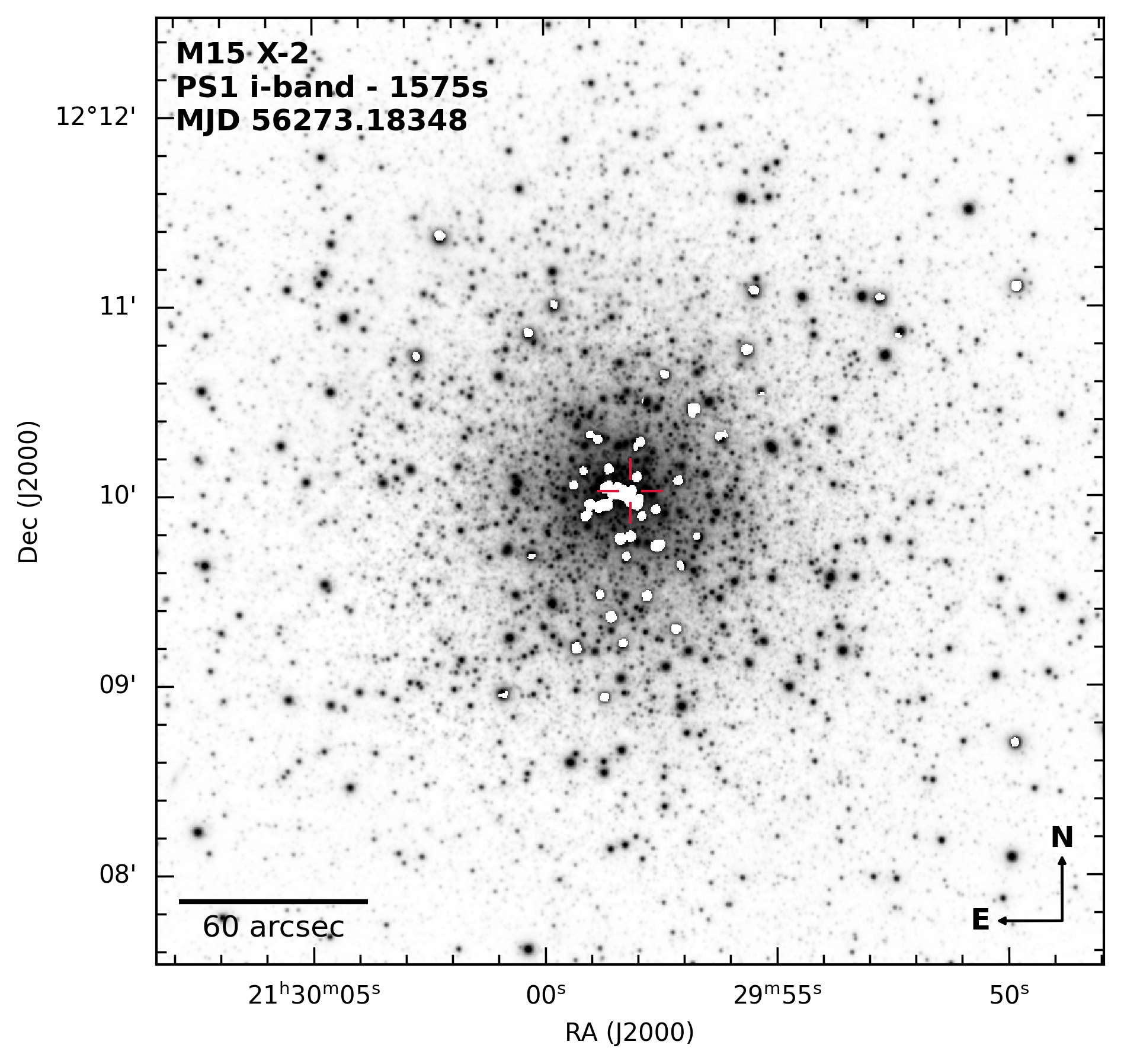« Previous object
Next object »
ID# 6
M15 X-2
CXOU J212958.1+121002, NGC 7078 X-2
RA Dec
|
ℓ b
|
Year of discovery: 2000
(White2001)
| Location in Globular Cluster | M15/NGC 7078 | |
|---|---|---|
| Type of accretor | NS | Persistent |
|
Distance [kpc] (other distances) |
10.709
-0.096+0.095 |
Baumgardt2021 Harris2010Kuulkers2003Watkins2015 |
| z [kpc] | -4.91 | Baumgardt2021 |
| Orbital period (Porb) [min] | 22.5806±0.0002 | Dieball2005 |
| Porb determination method | UV modulation | |
| Thermonuclear X-ray burst | Short-B IB |
vanParadijs1990bSmale2001 Galloway2020 |
| Peak X-ray flux [erg s-1 cm-2] (2 - 10 keV) |
6.71E-11 | White2001 |
| NH [x1022 cm-2] | <0.034 | White2001 |
| E(B-V) [mag] | 0.1±0.01 | Harris2010 |
| Magnitude | U=18.6 | DeMarchi1994White2001 |
| Proposed companion | C, He WD (UV SED modelling) |
Dieball2005 |
| M15 X-2 could only be separated from AC211 by Chandra. The combined unresolved emission is known as 4U 2129+12 or 4U 2127+119. Although it is not clear which of the sources is the burster, it is believed to be M15 X-2 (White2001, Kuulkers2003). Although M15 X-2 is a persistent source, it has shown episodes of increased activity (Sivakoff2011, Pooley2013, Homan2022). The source was detected at 5 and 7 GHz during its 2011 increased activity period (Miller-Jones2011). |
| UV | Excess of flux (C IV λ1550 and He II λ1640 emission lines ?) | Dieball2005 |
|---|---|---|
| Optical | ||
| X-ray | Featureless | White2001Koliopanos2021 |
|
|||
|---|---|---|---|
| U=18.6, I < 20.5 | |||
Aladin finding chart
Scroll to zoom. Set survey image in "Manage layers"
Default image: DSS2 Red
M15 X-2 in Simbad
Pan-STARRS1 finding chart
Click to enlarge in new tab/window

References to finding charts
This research has made use of NASA's Astrophysics Data System (ADS) and the SIMBAD database operated at CDS (Strasbourg, France)
Please acknowledge the use of this catalogue in any published work you derive from it.
Last modified: 09 May 2023.

